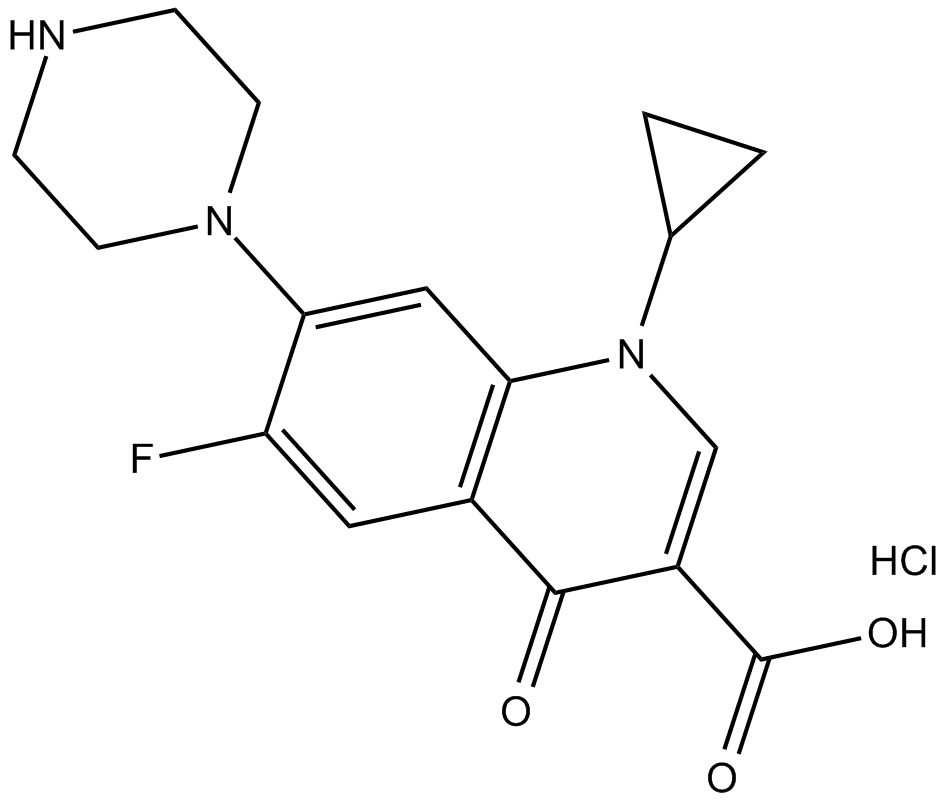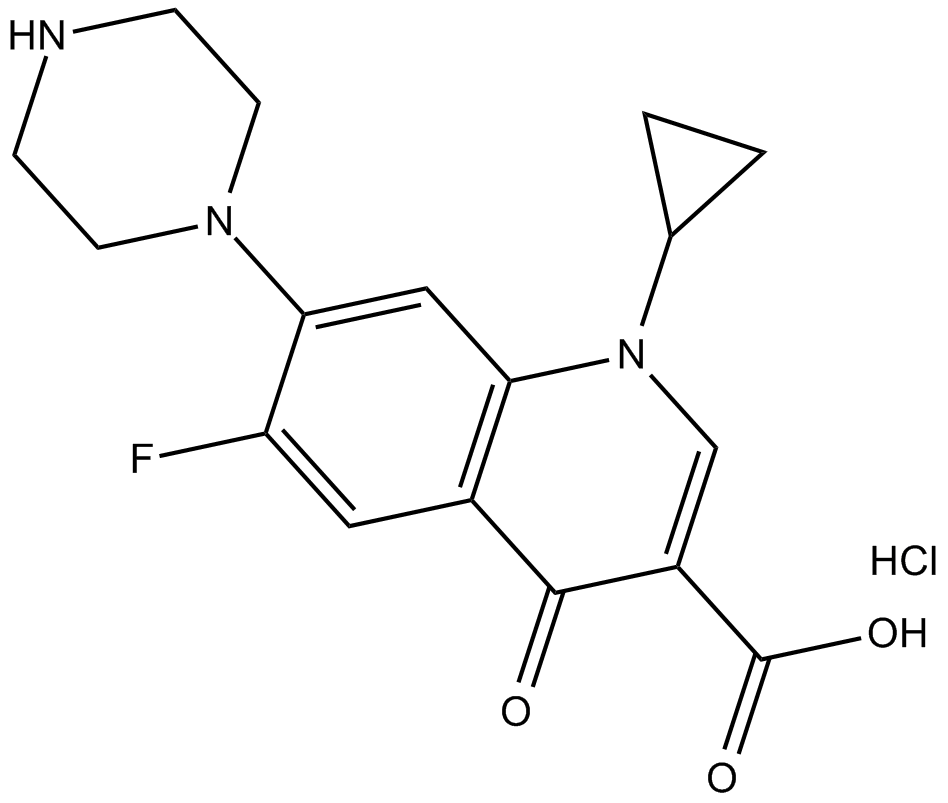Ciprofloxacin (hydrochloride)
Ciprofloxacin (hydrochloride) (CAS 93107-08-5) is a fluoroquinolone antibiotic targeting bacterial DNA gyrase and topoisomerase IV, enzymes essential for bacterial DNA replication and supercoiling. By inhibiting these enzymes, ciprofloxacin prevents bacterial chromosome replication and proliferation. It also displays immunomodulatory activity, evidenced by reduced serum pro-inflammatory cytokines (IL-6, KC) and decreased apoptosis and autophagy in radiation-induced injury mouse models. Ciprofloxacin is FDA-approved for treating inhalational anthrax exposure, significantly enhancing survival in rhesus monkeys infected with aerosolized B. anthracis.
| Physical Appearance | A crystalline solid |
| Storage | Store at -20°C |
| M.Wt | 367.8 |
| Cas No. | 93107-08-5 |
| Formula | C17H18FN3O3·HCl |
| Synonyms | BAY-o 9867; NSC 620634 |
| Solubility | insoluble in EtOH; ≥33.87 mg/mL in H2O; ≥9.34 mg/mL in DMSO with ultrasonic |
| Chemical Name | 1-cyclopropyl-6-fluoro-1,4-dihydro-4-oxo-7-(1-piperazinyl)-3-quinolinecarboxylic acid, monohydrochloride |
| SDF | Download SDF |
| Canonical SMILES | OC(C(C(c1c2)=O)=CN(C3CC3)c1cc(N1CCNCC1)c2F)=O.Cl |
| Shipping Condition | Small Molecules with Blue Ice, Modified Nucleotides with Dry Ice. |
| General tips | We do not recommend long-term storage for the solution, please use it up soon. |
Quality Control & MSDS
- View current batch:
Chemical structure









